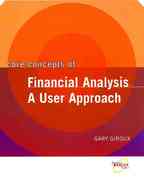Question
You are the experienced assistant auditor for Fuel Pro (the Company), whose audit is subject to the standards of the AICPA. The company develops, manufactures,
You are the experienced assistant auditor for Fuel Pro (the "Company"), whose audit is subject to the standards of the AICPA. The company develops, manufactures, and distributes fitness beverages. Your engagement team has identified risks of material misstatement related to the existence, valuation and allocation, and rights and obligations assertions of accounts receivable, specifically the risks of material misstatement that the client has recorded in sales and accounts receivable for sales and shipments that are not valid or are recorded at the incorrect amount. Your field senior has assigned you to test the accounts receivable balance by sampling and confirming balances with individual customers, which is a common audit test to address these risks of material misstatement.
As part of your risk assessment procedures, you obtained an understanding of the Company's accounting policy, processes, and controls regarding the accounts receivable balance by performing procedures (including inquiries of management and process owners) and walkthroughs of the processes related to accounts receivable. As a result of these procedures, you understand that the accounts receivables balance is relatively homogeneous and consists of a high volume of low-dollar value transactions. You decide to use data analytics to obtain fact-based evidence and to corroborate your understanding of the accounts receivables balance.
On the basis of your analysis, you identified one statistical outlier of $2 million, while the remaining balance aggregated to $20 million, which is made up of approximately 2,500 homogeneous transactions. Upon further inquiries about the $2 million transaction, you determined that it is a related-party transaction. On the basis of your analysis of the accounts receivable balance, you define the customer balance as the sampling unit. You determine that any balances greater than performance materiality should be selected for testing and therefore select the $2 million related-party transaction. You then determine that you would statistically sample the remaining population.
The other relevant factors are as follows:
? Performance materiality is $1 million.
? Clearly trivial threshold is $70,000.
? The population size, excluding the $2 million selected balance, is $20 million (no other items are above performance materiality).
? The level of risk is determined to be "higher."
? You are relying on the operating effectiveness of internal controls.
? The client provided the accounts receivable population to you in electronic format.
? Through the use of data analytics, you noted that the population had similar, positive value characters.
Required: 1. What factors should be considered when determining the sample size for tests of details ? in this instance the accounts receivable balance? You select 30 accounts receivable customer balances based on the sample size that has been determined in accordance with your Firm's sampling tables. Using the appropriate sampling method, determine the customer balances to be selected.
2. What factors should be considered when determining the sampling method (e.g., random, monetary unit sample)?
3. Using the facts in this case study, give examples of sampling methods and their relevant characteristics and determine the most appropriate statistical sampling method to use.
You send a total of 31 confirmations: 30 confirmations as determined by the sampling table and 1 that was judgmentally selected because it was greater than performance materiality. A selection of the confirmation results for Fuel Pro is shown below.

Step by Step Solution
There are 3 Steps involved in it
Step: 1

Get Instant Access to Expert-Tailored Solutions
See step-by-step solutions with expert insights and AI powered tools for academic success
Step: 2

Step: 3

Ace Your Homework with AI
Get the answers you need in no time with our AI-driven, step-by-step assistance
Get Started


